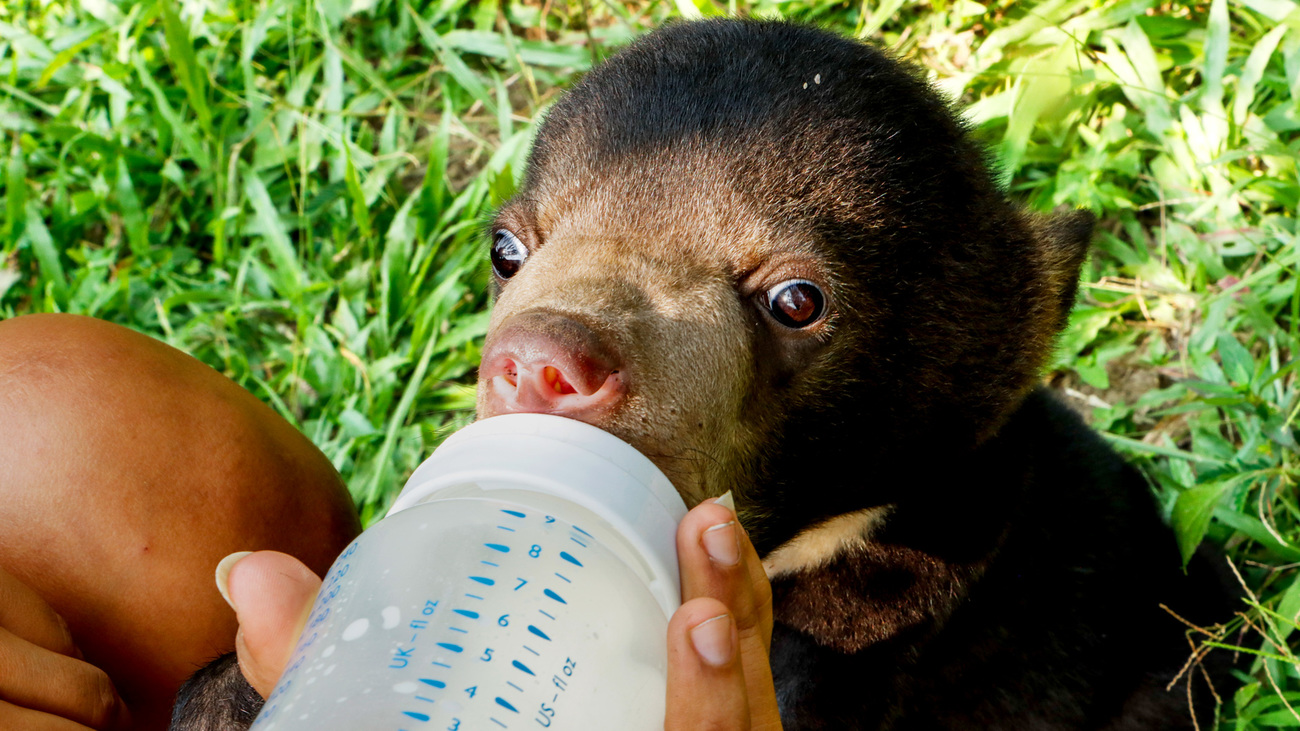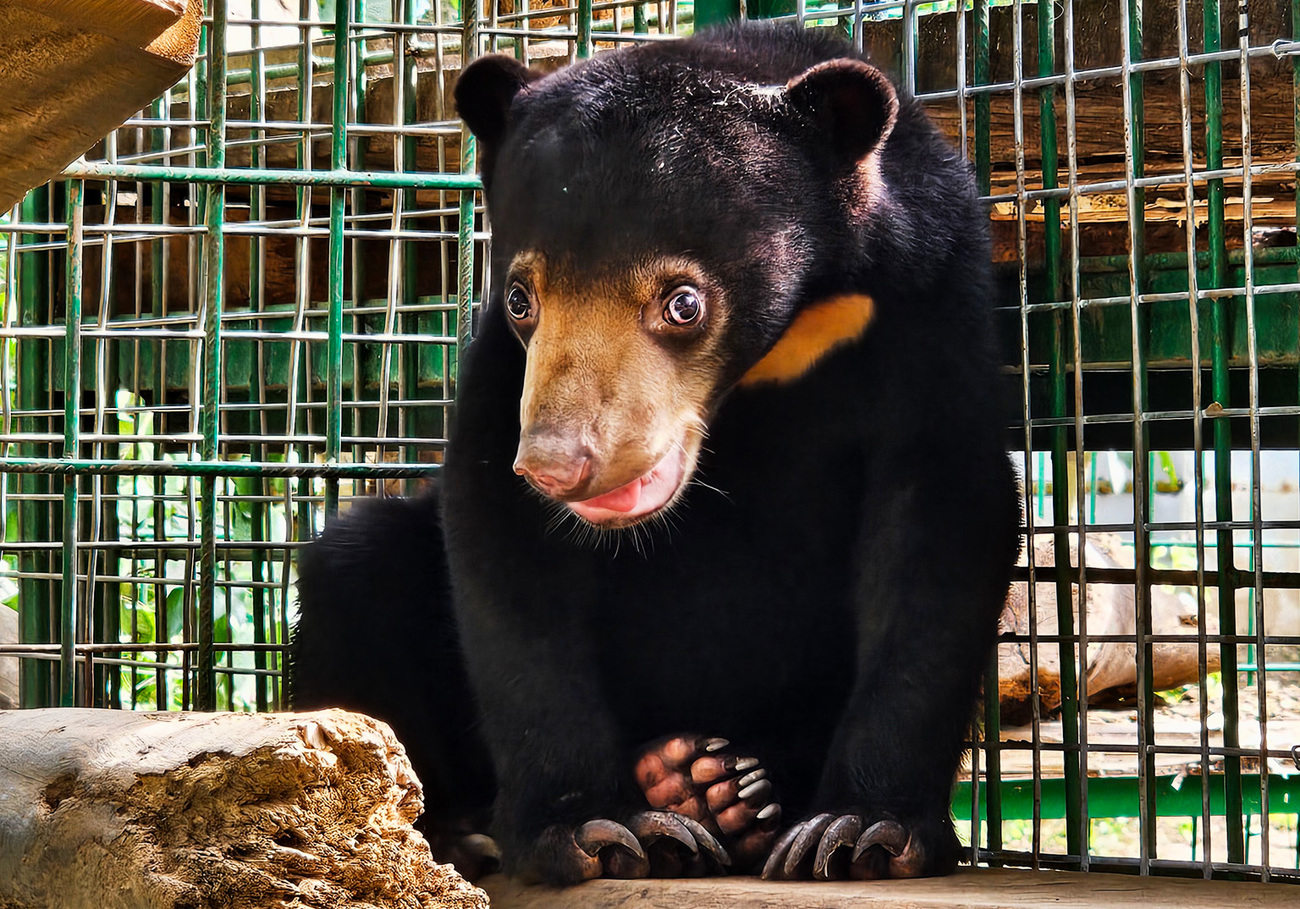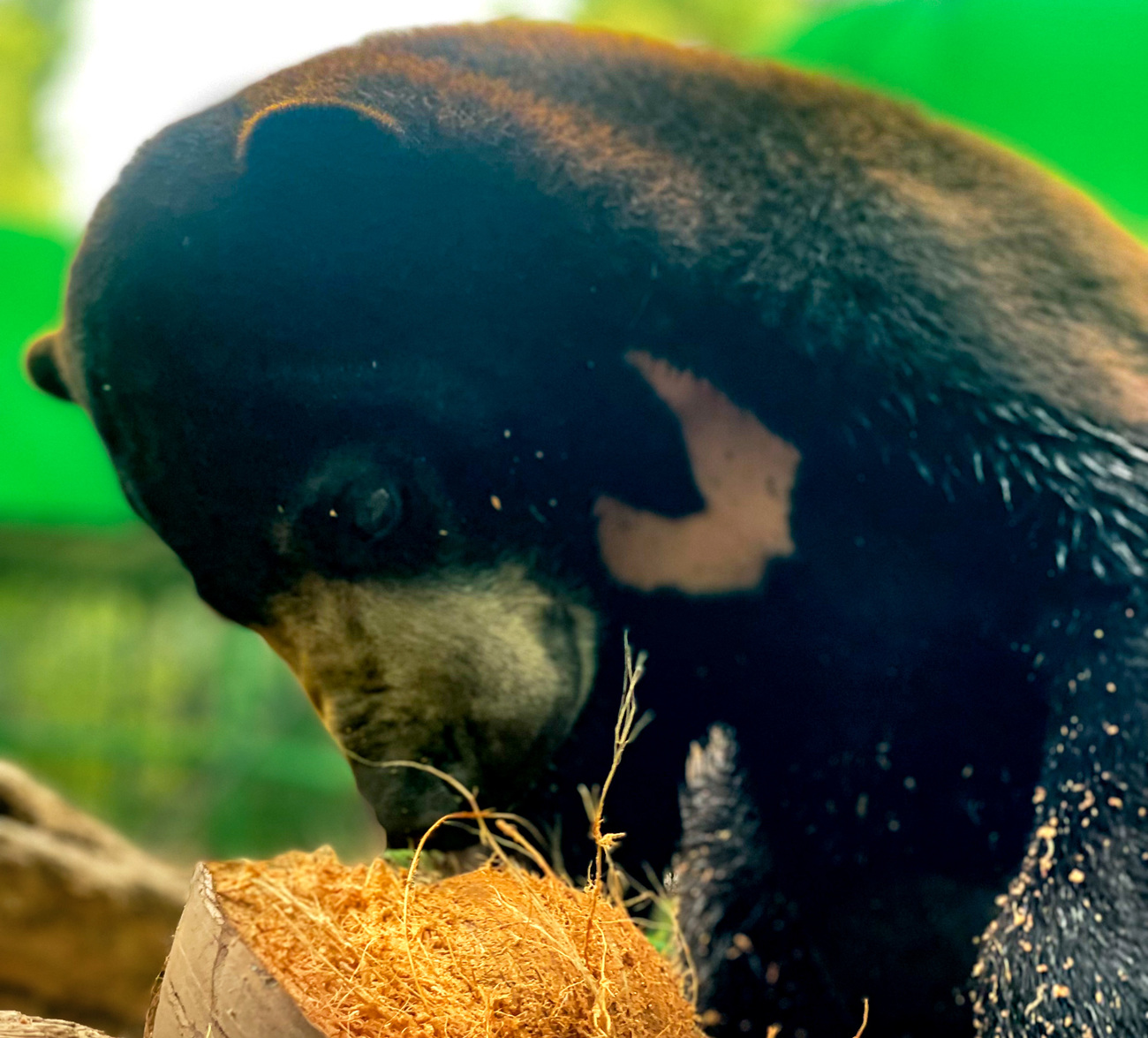Protecting Indonesia’s endangered wildlife
Protecting Indonesia’s endangered wildlifeRescuing the world’s smallest and most vulnerable bear species
Rescuing the world’s smallest and most vulnerable bear species

This was the fate destined for three sun bears before they were rescued by IFAW’s partner Jakarta Animal Aid Network (JAAN) in Indonesia and given a second chance.
Measuring only 1.2 to 1.5 metres (four to five feet) long and weighing just 27 to 68 kilograms (60 to 150 pounds) as adults, sun bears are the world’s smallest and most threatened bear species. The IUCN lists sun bears as vulnerable—just one step away from being endangered. Their habitat in the tropical forests of Southeast Asia is diminishing, they’re hunted for their body parts and fur, and they face the risk of being captured for the pet trade.
A timid young cub
This was the case for one male cub who was recently confiscated from an illegal trader on 9 May after a long investigation. Having finally obtained enough evidence, JAAN alerted Indonesian police, resulting in a raid of the illegal trader’s home. Carers believe the young bear is less than a year old.
The cub, who doesn’t yet have a name, is scared and timid after his traumatic start to life. His carers are keeping a watchful eye over him, hoping he will soon gain the confidence and strength to eat and drink.
He joins six other rescued sun bears all under the care of the dedicated team at JAAN. Four of these sadly cannot be released to the wild, but there is hope for two of them—Mano and Henri, who are being rehabilitated with support from IFAW.

Mano learns independence in Forest School
Mano was three months old and weighed just over two kilograms when she was rescued from a car in Jakarta. Acting on a tip off, JAAN and the Indonesian police intercepted an illegal trade deal that would have seen poachers ship Mano from Indonesia to Dubai.
Mano has been with JAAN for nearly one year. She has two dedicated carers who take turns looking after her 24/7, just as her mother would have. When she first arrived, she needed milk every two hours. Then, as she grew, the team at JAAN built a special enclosure for her so she could learn how to climb and find food such as berries, nuts, and termites.
After some time, she graduated to JAAN’s Forest School, where she spends all day exploring the treetops under the watchful eye of her carers, who sleep beside her enclosure at night.
Mano is making great progress. She’s starting to fold leaves to make a nest in trees—a positive sign that puts her one step closer to life back in the wild. The next phase of Mano’s rehabilitation will be to fit her with a GPS tracker and release her deep in a national park, away from any potential harm.
Henri’s bumpy road to recovery
Henri was seven months old when he was rescued by the Indonesian Ministry of Environment and Forestry from owners who were keeping him in a cage.
As Henri was older when rescued, he is slower to learn than Mano. Since October, his carers have been patiently teaching him skills such as how to climb trees, crack a coconut, and find crickets.

His carers were hopeful he would join Mano in Forest School because the pair bonded when they were being rehabilitated, but Henri isn’t ready yet.
Slowly, Henri is improving, and the JAAN team is hopeful he will one day have learnt enough survival skills that he can also be fitted with a GPS tracker and released into the national park, in partnership with the Ministry of Forestry and Environment.
Carers hope the newest rescue will be able to join Forest School in the future just like Mano.
Supporting conservation through rescue
IFAW has been working with JAAN for more than a decade to disrupt wildlife trafficking networks, train law enforcement teams (including detection dogs), and ensure animals confiscated from illegal trade receive the best care. In most cases, rehabilitation needs to start immediately, so rescued young animals can learn the vital survival skills they would have gleaned from their mothers in the wild.
The ultimate goal is to reintroduce these animals back into the wild, where they will join wild populations—helping to ensure these species survive and thrive long into the future.
Related content
Every problem has a solution, every solution needs support.
The problems we face are urgent, complicated, and resistant to change. Real solutions demand creativity, hard work, and involvement from people like you.